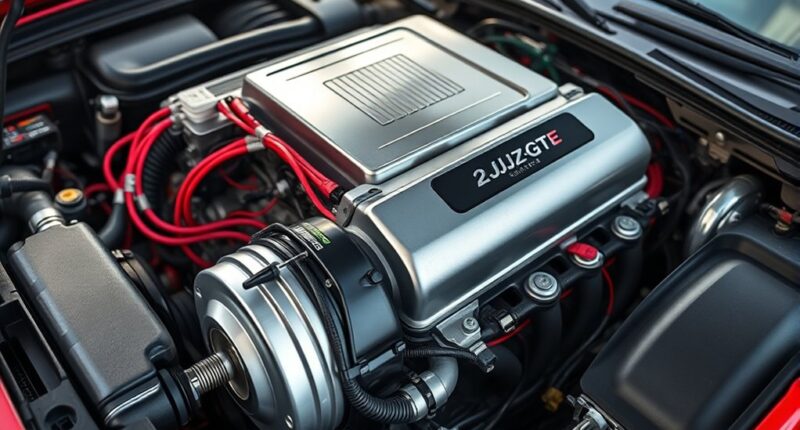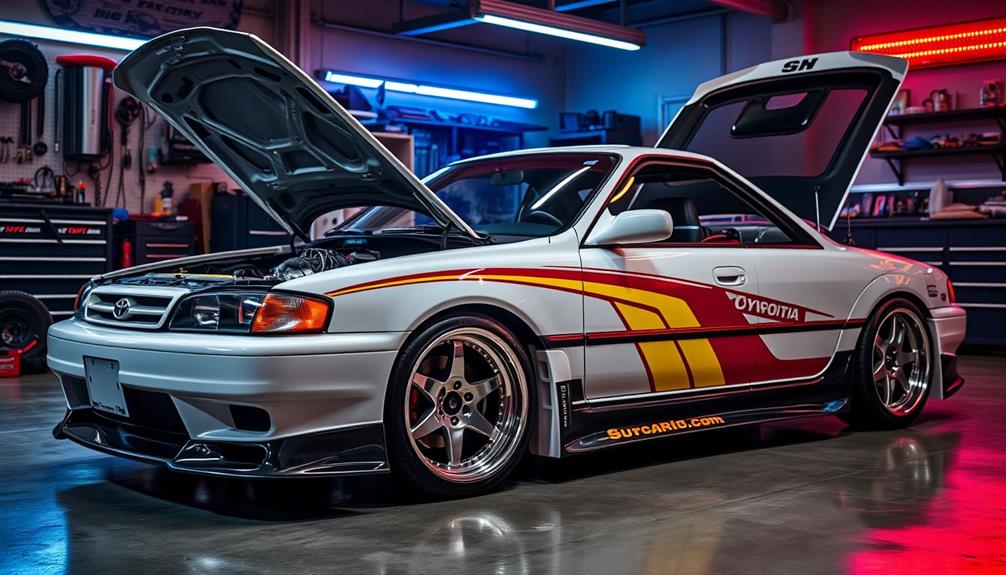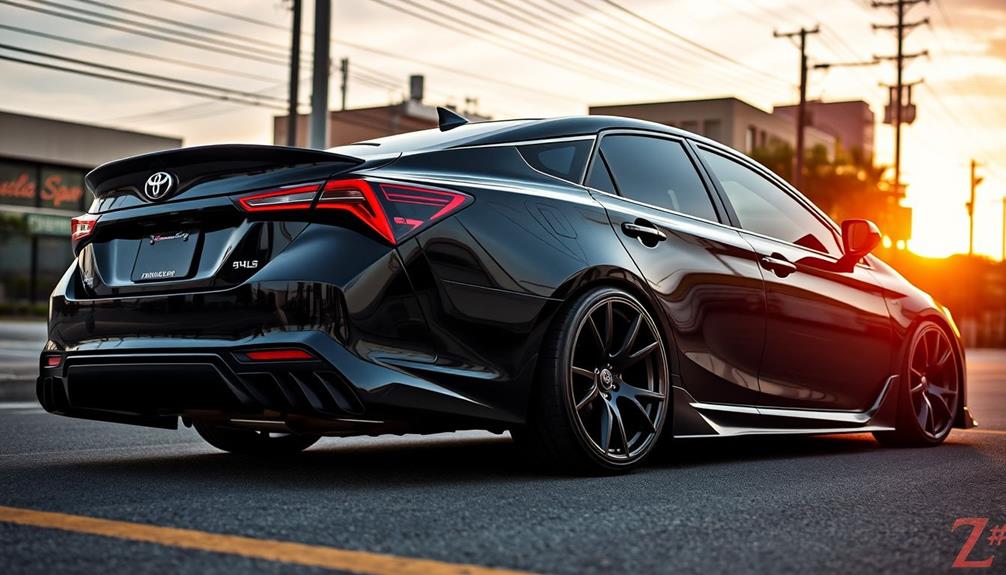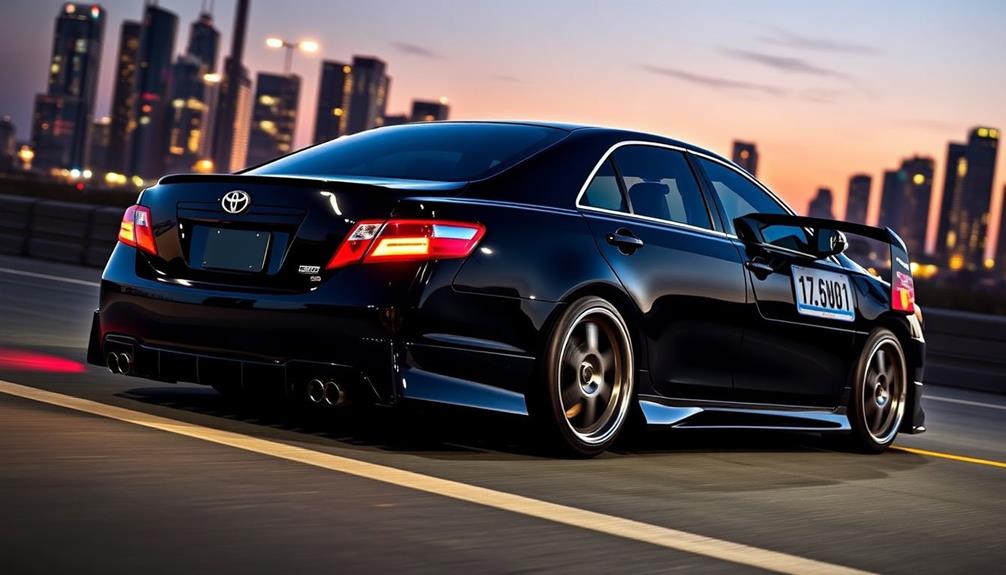Choosing between a standalone ECU and OEM integration for your 2JZ-GTE swap depends on your goals. If you want maximum control over tuning, customization, and power, a standalone system is the way to go. However, it requires more wiring, setup, and tuning skill. On the other hand, OEM integration offers simpler installation, factory reliability, and less risk but limits modifications. Keep exploring to discover which option best fits your project and expertise.
Key Takeaways
- Standalone ECUs offer full customization for tuning, boosting power, and advanced modifications, unlike OEM systems with limited factory settings.
- OEM ECU swaps are simpler to install, utilizing factory wiring harnesses, whereas standalone setups require extensive wiring and electrical knowledge.
- Tuning standalone ECUs provides greater flexibility but demands specialized software and expertise, while OEM systems are easier to troubleshoot.
- OEM ECUs ensure high reliability with minimal wiring errors, whereas standalone systems pose risks if not properly installed or tuned.
- Choose standalone ECUs for maximum performance and customization; opt for OEM integration for a straightforward, reliable swap.

When upgrading a 2JZ-GTE engine, choosing between a standalone ECU and OEM integration is a critical decision that impacts performance, reliability, and ease of tuning. If you’re aiming for maximum power and customization, a standalone ECU might seem appealing. However, this choice comes with its own set of tuning challenges and wiring complexity. Standalone ECUs give you full control over fuel maps, ignition timing, boost control, and other parameters, allowing you to tailor the engine’s performance precisely. But, this level of customization requires you to understand the ECU’s software deeply, and setting it up properly can be time-consuming. You’ll need to manually wire in sensors, injectors, and other components, which increases wiring complexity. This process demands a good grasp of the wiring diagram and electrical systems, as errors can lead to inconsistent engine behavior or even damage. Additionally, many standalone ECUs require a dedicated tuning setup, which might involve additional hardware or software.
In contrast, OEM integration offers a more straightforward approach, especially if you want a reliable, plug-and-play solution. OEM ECUs are designed to work seamlessly with the factory wiring harness, reducing wiring complexity and minimizing installation time. They’re typically more user-friendly for those who prefer a “bolt-on” upgrade without extensive tuning knowledge. However, OEM systems limit your ability to modify fueling, ignition, or boost levels beyond factory specifications. This can be a drawback if you’re seeking significant performance gains or plan to heavily modify your engine. While OEM ECUs are generally reliable and less prone to tuning challenges, they might restrict your potential if you’re aiming for high horsepower builds.
Another factor to weigh is the support and tuning community. Standalone ECUs often have robust aftermarket support, with tuners experienced in customizing your engine’s parameters. This can make tuning more flexible but also demands that you find a knowledgeable tuner and be prepared for potential troubleshooting. OEM ECUs, on the other hand, are well-documented and easier to troubleshoot since they’re designed for factory setups, but they lack the flexibility to adapt to custom modifications without additional hardware or software.
Ultimately, your decision hinges on your goals, technical expertise, and willingness to navigate wiring complexity. If your priority is maximum performance and you’re comfortable with tuning challenges, a standalone ECU could be the better choice. But if you prefer a more straightforward, reliable upgrade with minimal wiring fuss, OEM integration will serve you well. Either way, understanding these differences helps you make an informed choice that aligns with your project’s scope and your skill level. And keep in mind that regional bank hours and holiday schedules can impact your access to support or services if needed during your build process.
Frequently Asked Questions
Can I Upgrade My 2JZ-GTE ECU Without Professional Help?
You can upgrade your 2JZ-GTE ECU without professional help if you’re comfortable with DIY installation, but ECU calibration can be tricky. It’s essential to follow detailed guides and have the right tools. Keep in mind, improper installation or calibration might cause engine issues. If you’re new to this, consider consulting online communities or professionals to ensure your upgrade is secure and effective.
How Does ECU Tuning Affect Engine Longevity?
When you tune your ECU, it directly impacts engine wear and fuel efficiency. Proper tuning optimizes fuel delivery and ignition timing, reducing stress on engine components, which helps extend engine longevity. However, aggressive or improper tuning can accelerate engine wear and decrease reliability. To protect your engine, focus on balanced tuning that improves performance without overtaxing parts, ensuring you get the most out of your setup without sacrificing longevity.
Are There Legal Concerns With Aftermarket ECU Modifications?
You should be aware of legal implications when modifying your ECU, especially with aftermarket options. Some regions have strict laws against tampering with emissions controls or bypassing manufacturer security features. Copyright concerns also come into play if you use proprietary software or firmware. Always check local regulations and verify your modifications comply to avoid fines or legal issues, and consider using reputable tuners to stay within legal boundaries.
What Is the Cost Difference Between Standalone and OEM Swaps?
When comparing costs, a standalone ECU swap typically costs more upfront due to the price of the unit and installation, while OEM integration usually stays within your existing budget. Your budget considerations should include not just the parts, but tuning and potential modifications. If you want more control and customization, a standalone system might be worth the extra investment. For a simpler, cost-effective approach, OEM integration often fits better.
How Do I Ensure Compatibility With Aftermarket Parts?
So, you want to keep your ride happy with aftermarket sensors and wiring compatibility, huh? First, check each part’s specifications and match sensor types—don’t assume they’ll play nice. Then, peek at wiring diagrams to guarantee your connectors and pinouts align. If things look dicey, consider adapters or custom wiring. Basically, do your homework, avoid surprises, and your upgraded system will run smoother than a fresh oil change.
Conclusion
Whether you choose a standalone setup or stick with OEM integration, your decision dramatically determines your drivetrain’s destiny. Consider your goals, technical talents, and tuning tenacity to make the most meaningful modification. Ultimately, your choice crafts your car’s character—whether it’s a meticulously managed masterpiece or a power-packed performer. So, weigh your options wisely, wield your wisdom well, and watch your 2JZ-GTE work wonders with your winning will!










